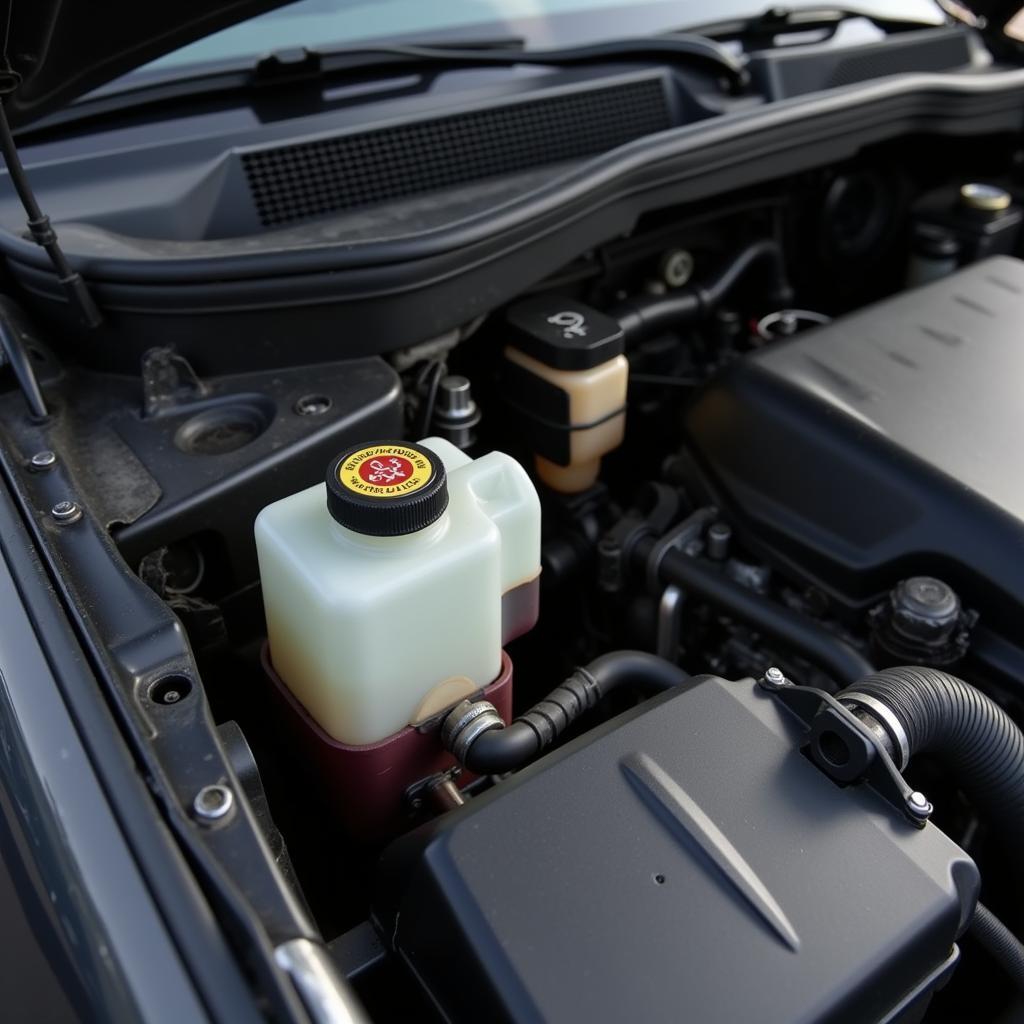The anti-lock brake system (ABS) is a crucial safety feature in your car. When the “ABS” or “brake system” warning light illuminates on your dashboard and refuses to turn off, it signals a potential problem that shouldn’t be ignored. This persistent warning light indicates that your ABS system might be malfunctioning and unable to engage when needed. Let’s delve into the common reasons behind this issue and explore the possible solutions.
Common Culprits Behind a Persistent ABS Warning Light
There are several reasons why your anti-lock brakes warning light might stay on. Identifying the root cause is key to resolving the issue effectively.
1. Faulty Wheel Speed Sensors
What they do: Wheel speed sensors, often positioned near the wheel hub or within the bearing itself, constantly monitor the rotational speed of each wheel. This information is relayed to the ABS control module.
Why they fail: These sensors are exposed to harsh conditions like dirt, debris, and moisture, which can lead to malfunctions.
2. ABS Control Module Issues
What it does: The ABS control module is the brain behind your anti-lock brake system. It receives data from the wheel speed sensors and other components to determine when to activate the ABS.
Why it fails: Electrical problems, exposure to moisture, or general wear and tear can cause the ABS module to malfunction.
3. Low Brake Fluid Level
Why it matters: Brake fluid is the lifeblood of your entire brake system, including the ABS.
Why it’s low: A leak in the brake lines, calipers, or wheel cylinders can result in low brake fluid levels, triggering the ABS warning light.
 Low Brake Fluid Reservoir
Low Brake Fluid Reservoir
4. Worn Brake Pads
The connection: While not directly linked to the ABS system, severely worn brake pads can sometimes trigger the ABS warning light. This occurs because the worn pads affect the hydraulic pressure within the brake system.
5. Malfunctioning ABS Pump
What it does: The ABS pump is responsible for regulating the brake fluid pressure to prevent wheel lockup during hard braking.
Why it fails: Electrical issues or physical damage to the pump can cause it to fail.
Troubleshooting Your ABS Warning Light
Before you jump to conclusions, remember that a persistent ABS warning light doesn’t always mean a major problem. Here’s a step-by-step approach to troubleshoot the issue:
-
Check Your Brake Fluid: This is the easiest and cheapest place to start. If the fluid level is low, add the correct type of brake fluid for your vehicle and check for leaks.
-
Inspect Your Brake Pads: If your brake pads are significantly worn, have them replaced. Brake pad warning light stays on is a common issue, and addressing it can sometimes resolve the ABS warning light as well.
-
Scan for Trouble Codes: A professional-grade diagnostic scanner can read the trouble codes stored in your car’s computer. These codes provide valuable clues about the source of the ABS problem.
-
Inspect Wheel Speed Sensors: A visual inspection of the wheel speed sensors can reveal any obvious damage or debris buildup.
When to Seek Professional Help
While some ABS issues can be addressed with basic DIY troubleshooting, others require the expertise of a qualified mechanic. Consider seeking professional help if:
- You’re uncomfortable working on your car’s brake system.
- You’ve tried the troubleshooting steps and the warning light persists.
- The diagnostic scanner reveals complex trouble codes.
Remember, a functioning ABS system is crucial for your safety and that of your passengers.
Real-World Experience
John S., a certified automotive technician with over 15 years of experience, says: “Many car owners underestimate the importance of a functioning ABS system. It’s not just about preventing skidding; it’s about maintaining control of your vehicle in emergency situations.”
Don’t Ignore the Warning
A persistent anti-lock brakes warning light is a clear signal that something isn’t right. Ignoring it could compromise your safety on the road. By understanding the potential causes and taking appropriate action, you can ensure that your ABS system is in top working order, ready to provide the vital safety it’s designed for.
Frequently Asked Questions
1. Can I still drive my car if the ABS light is on?
It’s technically possible to drive with the ABS light on, but it’s highly discouraged. Your regular brakes should still function, but the ABS system will be deactivated, increasing your risk of wheel lockup during hard braking.
2. How much does it cost to fix an ABS light?
The cost of repair varies widely depending on the underlying cause. A simple brake fluid top-up might cost a few dollars, while replacing a faulty ABS control module could cost several hundred dollars or more.
3. Can a bad battery cause the ABS light to come on?
While rare, a severely drained or faulty battery can sometimes cause electrical issues that trigger the ABS warning light.
4. How long does it take to fix an ABS light?
The repair time depends on the complexity of the problem. A simple sensor replacement might take less than an hour, while diagnosing and repairing a complex electrical issue could take several hours or even days.
5. Is it safe to drive with the ABS and brake light on?
Driving with both the ABS and regular brake warning lights illuminated is extremely dangerous. This situation usually indicates a serious problem with your entire braking system. It’s crucial to stop driving immediately and have your vehicle towed to a mechanic for inspection.

